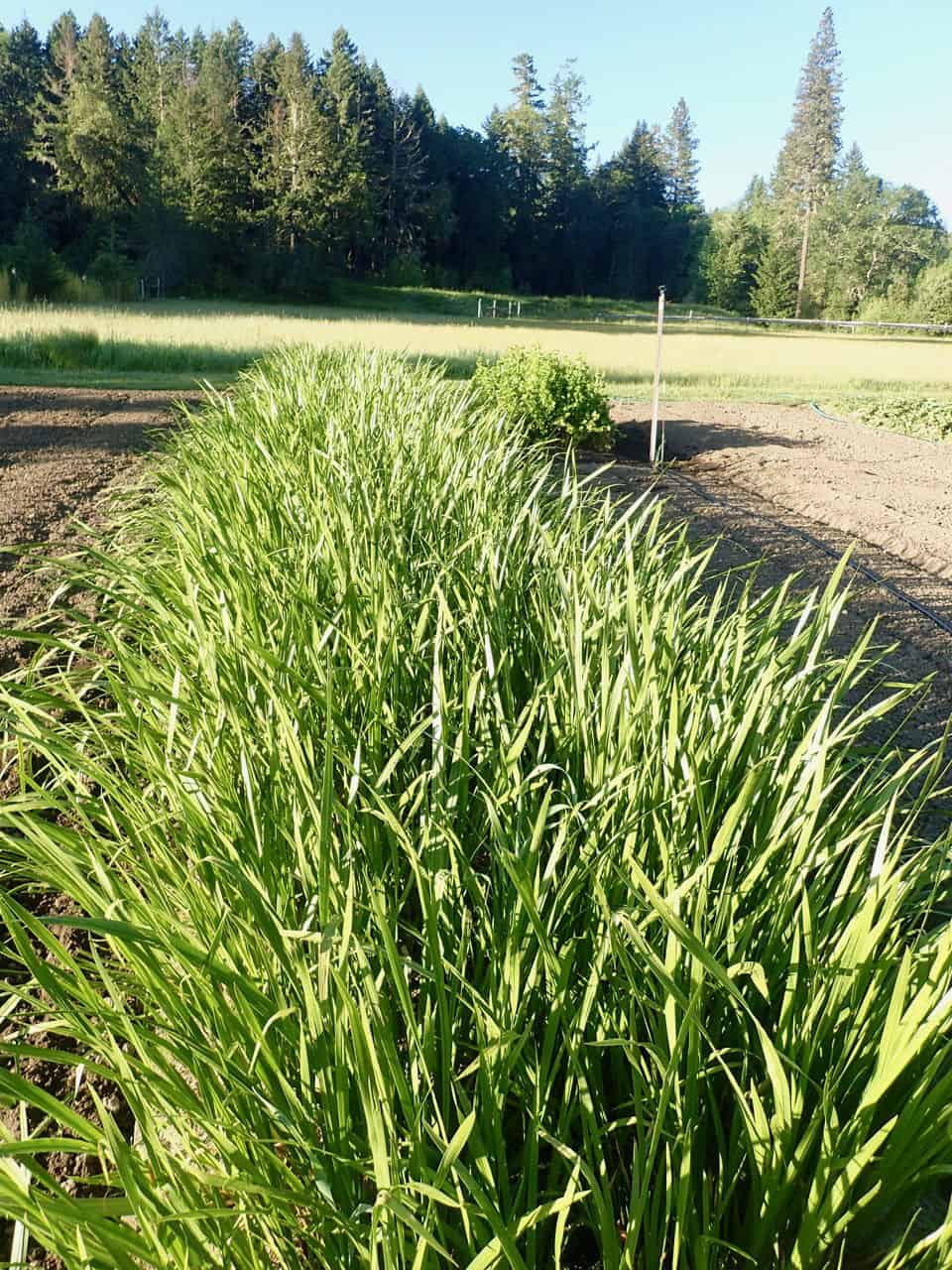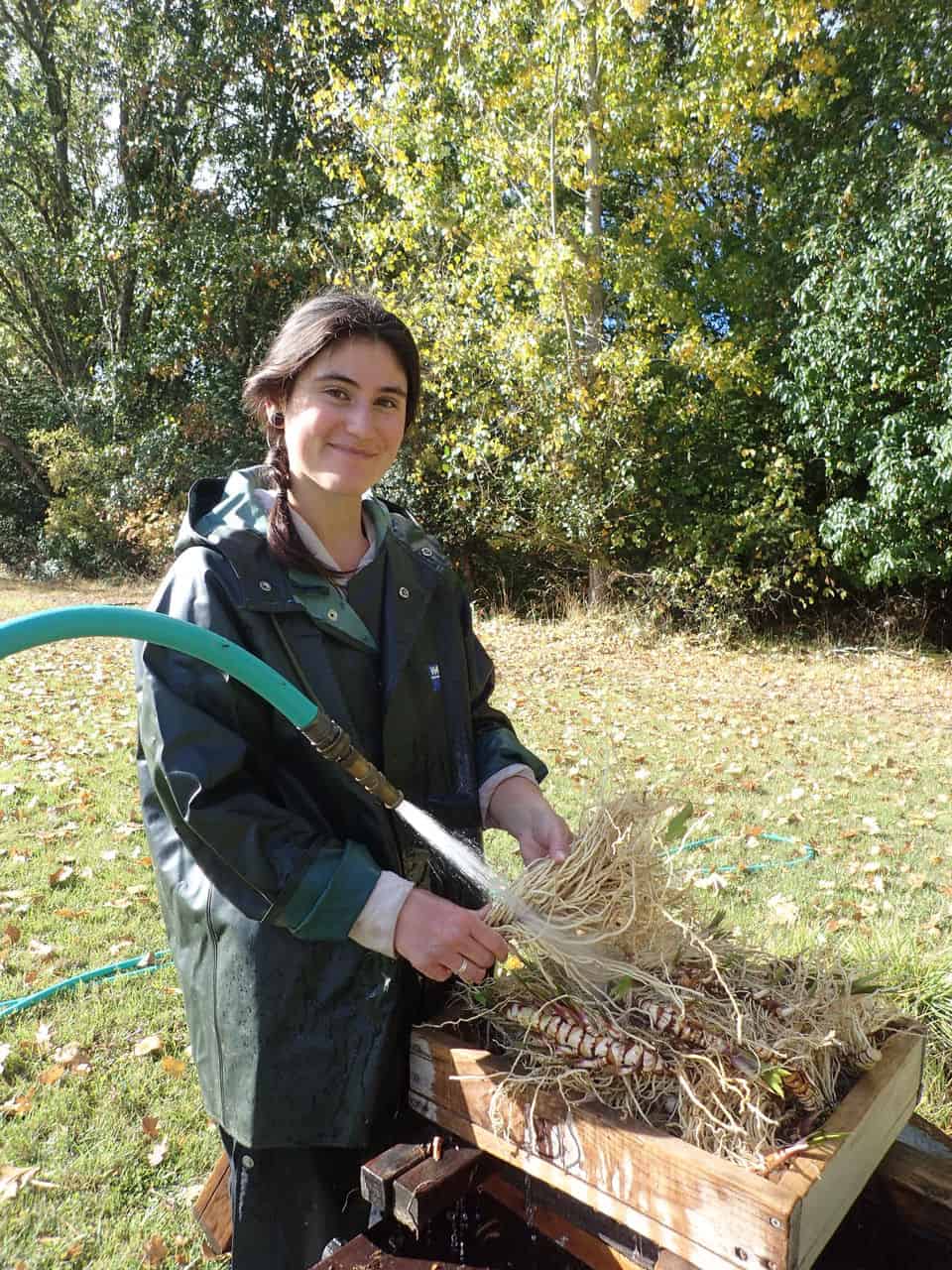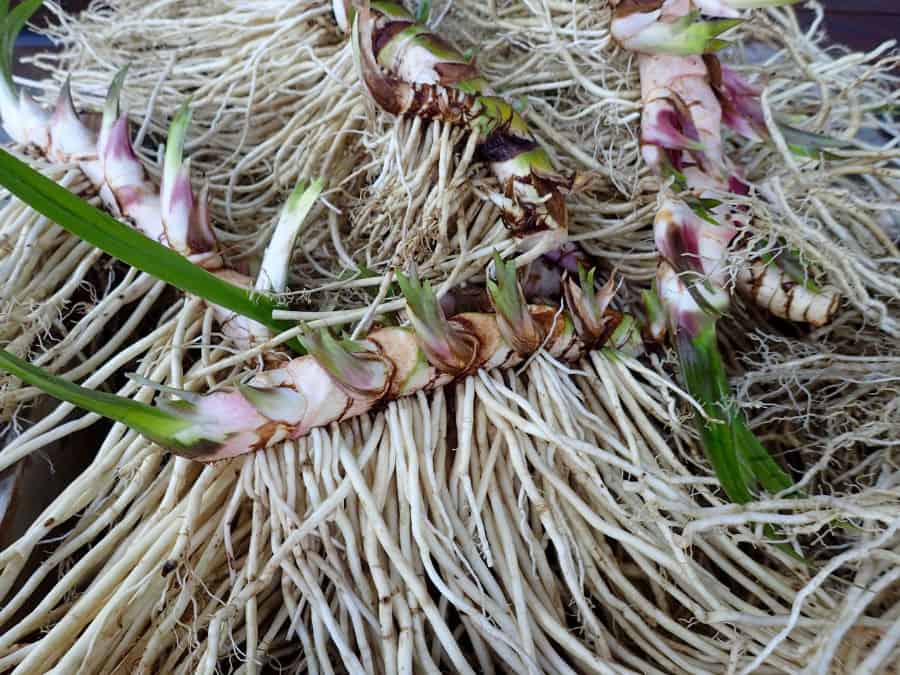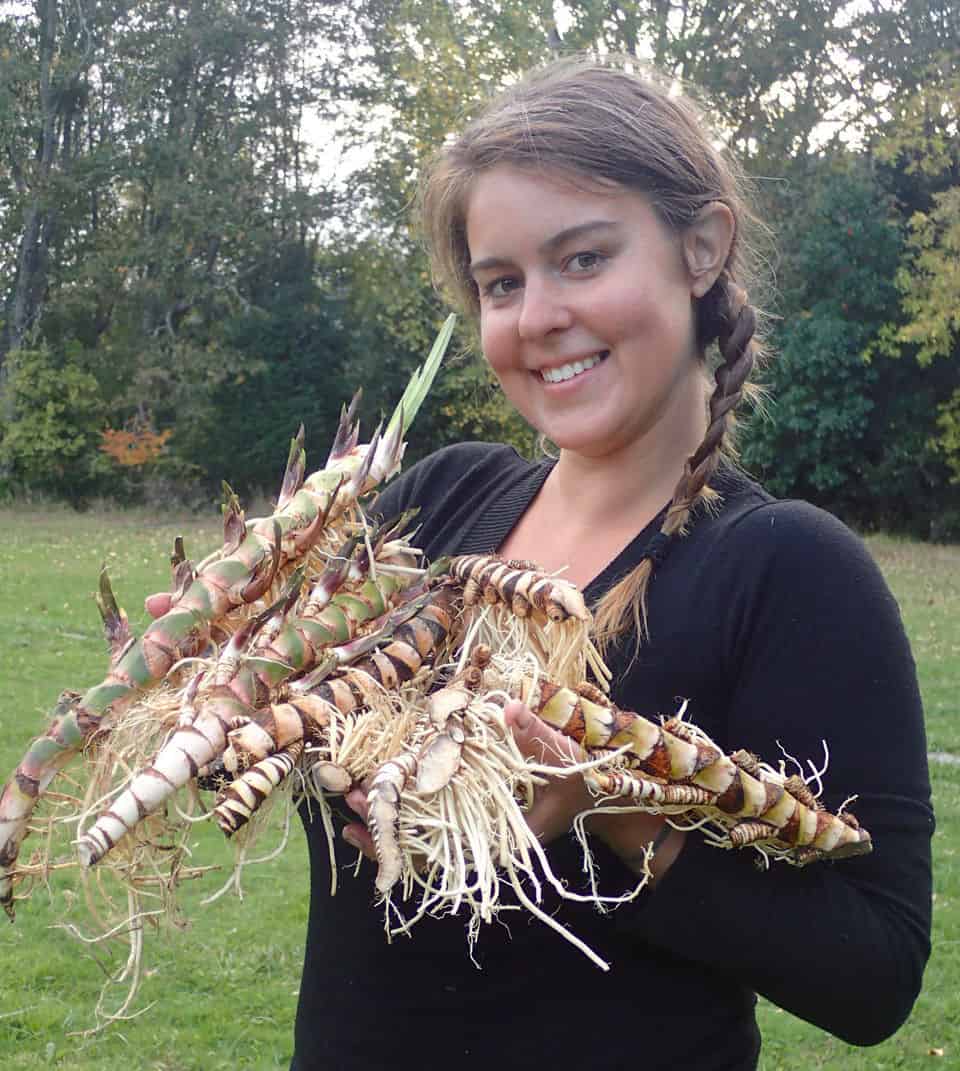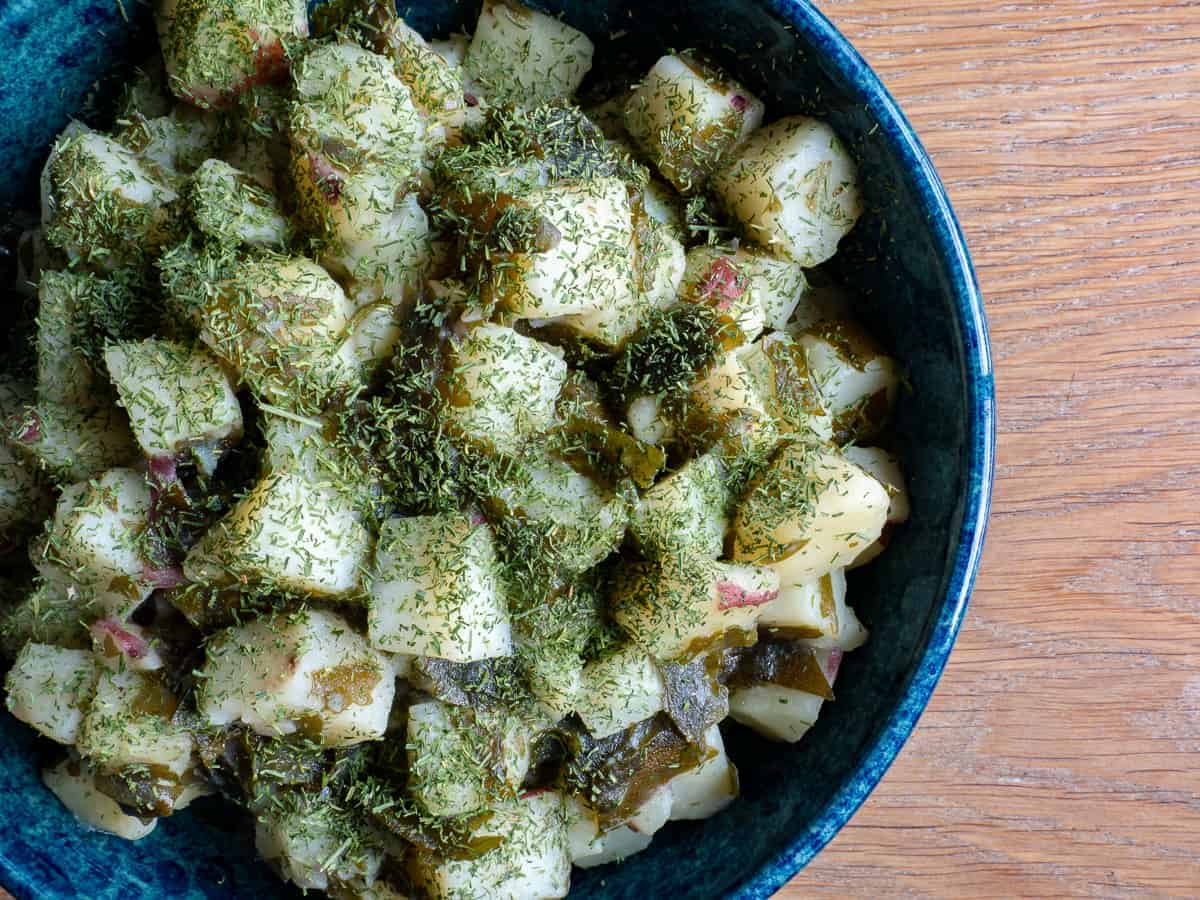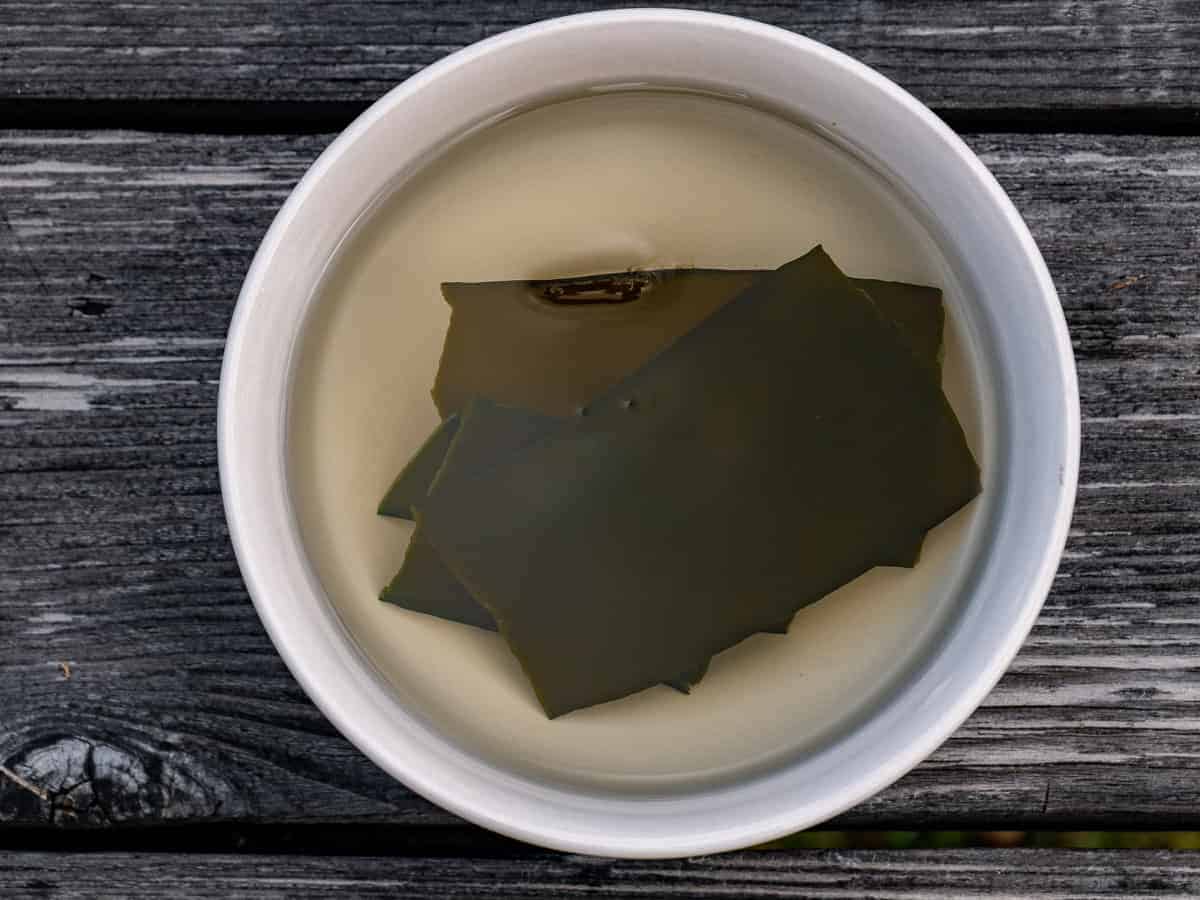Meet the Amazing American Calamus (Acorus americanus) aka Sweet Flag or Bitterroot, and read about its many health benefits in this article by herbalist Jim McDonald.
Our thanks to herbalist Jim McDonald for sharing this article! Learn more about Jim, here.
sweet flag / bitterroot
Acorus calamus / A. americanus
I probably know calamus more deeply than any other plant I’ve worked with, yet in spite of that (or perhaps because of it…) I find it most difficult to capture what I know of it in a way that adequately conveys its essential nature; its medicine. Perhaps this is because calamus is not a plant that facilitates “capturing” on any level, but rather teaches us to yield to the flow of things and let go of our needs for stark outlines and delineations. Still, this plant has clearly offered itself to me not only to learn from, but to share, and so that I’ll try to do here…
Acorus calamus is a semi-aquatic plant that likes to grow with “wet feet”, often alongside Irises, Cattails, and other waterweeds. It likes the edges of ponds, lakes, and rivers, but I’ve seen it growing in drier soil as well. This is usually due to seasonal water fluctuations… less rain, and it’s no longer in the water because the edge of the pond has receded. The leaves are similar to Cattail or Iris leaves, being sword shaped, and from 2 1/2 to 3 feet in length. Calamus leaves, though, are a yellow-green in color, not blue-green, and have a slightly wavy margin (edge) and a midrib. Easily, the most effective way to identify the plant is to break off and smell the leaves. Ahhhh… nothing else smells like Sweet Flag. The root is a rhizome, which is really not a root at all, but a horizontal stem that runs across the ground, out of which come the actual roots (which most people call rootlets, since they refer to the rhizome as the root). It is marked by leaf scars above, and produces abundant rootlets, which for the most part go straight down, below. There are no stems; the leaves rise directly from the rhizome. Taxonomically, Timothy Motley tells us “Acorus calamus var. americanus comprises diploid members that range in distribution from North America to Siberia. The sterile triploid A. calamus var. calamus is distributed throughout Europe, temperate India, and the Himalayan region, and the tetraploid variety, A. calamus var. angustatus is found in eastern and tropical southern Asia including Japan and Taiwan.” I personally have little trust in the commercial differentiation between these varieties, and generally don’t assume that roots being sold as “american calamus” are actually Acorus calamus var. americanus; this species is said to have multiple midribs, something I’ve never seen any commercial suppliers display (hell, I’ve not seen them display any evidence of authenticity).
The plant can very easily be cultivated from a root cutting, and will grow quickly once established. I have several different varieties growing in a non-draining planter that I keep wet, and it thrives, producing flowers every year. I used wild soil in the planter, and the seeds and roots that came along with have all happily sprouted, offering a little wetland ecosystem that, when I was living on the third floor of an apartment building, the birds and insects delighted in. Though it was once adamantly insisted at me that “mosquito larvae can’t grow in water that calamus grows in(!)”, I routinely need to dump the standing water out of my planters because they can (and do) indeed.
The root is used medicinally, but added sparingly, the leaves can be steeped into an elegant if unusual tea or used for a unique smudge. They are incredibly nice to simply bruise and smell, and they’ve been long used strewn across floors to release their enlightening scent as they’re walked upon. If collecting the plant, keep in mind that as an aquatic, it’s going to have taken up whatever’s in the water it’s growing in, which you may not want to chew on. Ironically, the invading Mongols used to plant calamus in any source of water they intended to drink from, believing it would purify the water in which it grew. This act gave rise to one of its old folk names, “Mongolian Poison”… people were generally freaked out if they found it growing somewhere they hadn’t seen it before. Coming upon it in the wild, I always quickly scan the area for any such invading Mongols, but so far haven’t seen a one, and perhaps this teaches us that folklore, while certainly valuable, isn’t always universally true…
There are many differing varieties within the species, and medicinal activity varies greatly between these; both in strength and effect. In King’s American Dispensatory it is written that “Persian and East Indian calamus is said to be of better quality than that of other parts of the world”. This is an opinion I disagree with… these varieties are more heavily aromatic, but not necessarily of “better quality” outside of the virtues associated with its aromatic oils. Indian calamus seems to contain higher concentrations of volatile oils, and act more strongly on the digestion than less aromatic varieties. This preference in the Eclectic tradition may account for the focus on calamus as a predominantly digestive remedy, and explain why they placed less emphasis on its other virtues. The best way to determine the efficacy of a particular species or variety is to taste it for relative degrees of warmth, aromatics and bitterness.
As far as using calamus goes, I personally favor chewing on the root, fresh or dried; just a few pieces to a small handful (a tablespoon or two) is usually adequate over a day’s time, but I don’t stress on or have a strong suggestion as to “dosage”. Chewed, its intake is more easily assessed by taste and effect: want/need more? Chew on a bit more. Feel fine? Don’t chew on a bit more. If you’re lucky enough to have access to whole roots, dry them that way and just nibble or gnaw off the ends as desired. If you’ve got a particularly strong variety, you might just break off a bit, give it a few cursory chews, and then tuck it into your cheek to suck on… you don’t chew it like bubble gum. Vigorously chewing a big hunk of strong root will make you take a step or two backwards, shudder, and perhaps grimace.
Did I mention it’s a little bitter? Some people just complain, complain, complain… They’ll either spit it out at once and look at me suspiciously whenever I offer them anything (even years later), or they’ll be calling me for “more of that stuff”, realizing they’ve been craving bitter for years and never knew it. I know lots of people who now consider calamus among the best of the chewing roots, as I myself do. People who chew calamus tend to understand the value of chewing roots as an optimal means of using a plant, because no other preparation represents its virtues as well.
By preference I rarely use any fluid preparations of calamus, although they may be indicated and decidedly effective in digestive complaints. A cold infusion can be made by steeping the root overnight at the top of a jar filled with cold water, and then drinking this throughout the next day. I consider this the preferable way to prepare a water-based preparation, though there seems to be some cultural and personal preferences towards infusions or decoctions (these are far less palatable to me). The root has also been candied by boiling the transverse root slices in syrup, draining and drying, the resulting confection being freely eaten for dyspepsia (indigestion), or prepared by adding the extract to a simple syrup (Felter; Eclectic Materia Medica, Pharmacology & Therapeutics). Henriette Kress has offered a very nice recipe for both candies and a sweet flag syrup. Of course, many use and prefer tinctures, and while I’ve certainly tasted a number of excellent tinctures (and an alchemical spagyric or two), I don’t find them as useful as the chewed root. Still; it is an excellent medicine, and can be made from the fresh or dried root. Oh: you may have read that calamus loses its potency after a year. While it is indeed true that the aromatic oils will disperse and degrade, by no means does calamus “lose its potency” or become “inert”. I’ve got a jar full of 15 year old calamus that I occasionally pull out and chew on, and its still certainly effective, if not as much as when I first put it in the jar.
Calamus is a strong deterrent to those dreadful insects that people so dislike. Its use as a strewing herb – as in the leaves being “strewn all over the floor” – was likely practical (it’d keep the bugs away) as well as spiritual (the scent uplifts the spirit and dispels or diffuses “bad vibes”). I had the unpleasant experience of living in a flea infested house in college, and used the root powder on my ferret and our cats to repel fleas. I will say that the cats, after immediately trying to groom themselves, were none too pleased with me. I’ve also applied the essential oil to my windowsill to ward off the big black ants that thought my old apartment was a grocery store, with complete success. A bit of the essential oil diluted in alcohol and sprayed into the burrows of carpenter bees and on yellow jacket nests encourage the insects to vacate and doesn’t require their death.
So now I’ll endeavor to cover the medicinal aspects of calamus. You might notice that as I go on, the virtues described become a bit more… well, you’ll see. Also, it should be noted that as wonderful as the classic Eclectic texts are, they’re generally lacking in terms of what they tell us of calamus. Occasionally they’ll hint at its deeper virtues, but rarely more than that. This is rather odd, since the Eclectics learned so much about so many of their plant medicines from the Native Americans, and the Native Americans esteem calamus as one of the most useful, important, and Sacred of the herbs they use (and rightly so)…

The foundational actions evident in calamus are presented most clearly by its strong bitter, spicy and aromatic nature. This is an excellent blend of properties, as in relation to digestion, most herbal traditions agree that bitter tonic herbs are best complimented by warming aromatic spices… in calamus, all of these virtues are present in one plant. Accordingly, most of the available information on the traditional western uses of Sweet Flag focuses on its use as a digestive bitter and carminative used for treating cramps and flatulent colic. As such, calamus root stimulates digestive secretions and peristalsis, and expels gas. The British Pharmaceutical Codex states that “On account of a volatile oil which is present it also acts as a carminative, removing the discomfort caused by flatulence and checking the growth of bacteria that give rise to it”, which notes its antimicrobial properties. Think about it in people whose deficient gut function/sluggish metabolism results in food fermenting inside them before it can be digested properly. Quite a few years ago now, a 20 year old woman came to me after being admitted to the hospital for intense abdominal pain; she’d thought she was having a gall bladder attack or an appendicitis, but it ended up being a result of gas (yes, it can hurt that much). Shortly after the visit, she felt a recurrence of symptoms, and I recommended she drink fennel tea in the mornings and evenings, and chew dried calamus root throughout the day as desired. I considered her diet rather poor (understatement), but she showed little interest in changing it. Within a week all symptoms disappeared. She stopped drinking the fennel tea but continued to chew calamus root, as she stated that she had “acquired a taste for it”. The gas had not returned as a problem for the next year or two that I ran into her… this is after most of her life as being “chronically gassy”, and with little dietary change. Nice.
Candied calamus root was (and is, in some places) eaten for treating dyspepsia, heartburn, and indigestion. The dried root can be chewed as well, and is probably preferable, and equally if not more effective (compliance considered). Calamus Root is recommended by Felter & Lloyd for “feebleness of the digestive organs”, and Cook for “purely atonic dyspepsia”. In this regard, it likely isn’t restoring tone as a result of an astringent action (I’ve seen this property attributed to the plant, but it’s not one that presents itself to the palate in any variety I’ve tasted), but as a bitter tonic. As a digestive bitter, Sweet Flag has the effect of stimulating appetite, increasing secretions, and stimulating peristalsis to tell the digestive tract to get ready for food. Though definitely and overtly stimulating, it also relaxes interfering tension.
Chewing Calamus can effectively allay the nausea of motion sickness – car or air or whatever; anything characterized by what I call a “dizzy/queasy” feeling in the stomach – this is a primary indication for its use. I’ve used it driving through the Appalachian Mountains from Tennessee to North Carolina, when the roads were either all up and curvy, or all down and curvy. Chewing just a little bit (perhaps a 1/2 tablespoon, a bit at a time) brought lasting relief. For a “nervous stomach”, or nausea associated with panic and anxiety attacks, it is among the first herbs I think of; again, a little bit can be chewed as needed. The “a bit” part is really important to take note of… large doses could easily overstimulate the stomach and provoke vomiting. This is a fairly common occurrence when people try to take a lot of the powder mixed in water. So start with just the teeniest bit to see if it helps. I’m not inclined to use it for nausea related to pregnancy – you’d probably find it universally included in “do not take” lists, on account of its asarone content (to be discussed later), and though I don’t think the asarones are “toxic” as is suggested, it’s still more of an overtly medicinal plant than I like to use in pregnancy.
Calamus can serve as a wonderful breath freshener (or, well, I think so… I suppose it depends on how you feel about the flavor). My wife once fell asleep with a root in her mouth and woke up without a hint of morning breath (I’m afraid I’ll keep my means of discerning this to myself…). Mmmm…
While there is a considerable history of folk usage for treating diarrhea and dysentery, I’ve never used the plant for these purposes… possessing strong antimicrobial actions along with it’s bitter tonic actions, I can see the reasoning, though I’d be less inclined to use strong bitter varieties (which would encourage bile release) with loose stool, unless blended into a formula with more active astringents. Even then, I’d use it with a light hand.
Because aromatic bitters stimulate appetite by stimulating digestion, it may be a valuable consideration for addressing anorexia. As it also possesses a very effective anti-anxiety effect, and anxiety is a major instigator in eating disorders, methinks calamus would be an invaluable ally for those seeking to overcome this disorder. That said, you likely can’t just take an herb and not have anorexia anymore. Here, the digestive action of the plant melds with its role as an ally in helping one address deeper seated issues in their lives.
Looking at these uses, we can see calamus as a medicine for deficient/sluggish/stagnant digestive states, associated with tension, and perhaps infection or putrification. As it is overtly stimulating, it wouldn’t be an ideal remedy for GI excess states, with rapid transit and loose stools – at least, not on its own.
Traditional western herbalism offers very little information on calamus that extends beyond what’s been covered here. Now we must turn and honor the Native peoples who still use this plant widely, commonly referring to it as “bitterroot” throughout North America. Of course, many other plants are called by this name and some of them certainly shouldn’t be chewed on (dogbane comes to mind). Below you’ll notice I start using sweet flag, bitterroot and calamus interchangeably.
Of course, indigenous peoples knew all of the digestive virtues of calamus and used it accordingly, but they also expanded its applications. Kelly Kindscher reports in his “Medicinal Wild Plants of the Prairie” about the use of Bitterroot by contemporary Native American tribes curing adult onset diabetes: “When diabetics chewed the root regularly, they were reported cured within a few months. In the 1950s when Howard reported this use of calamus, he cited cases of Indian diabetics who had been “given up” by white doctors, but who were later cured by calamus.” Here, again, I’ve not got the slightest bit of experience, but can say that I talked with a woman a few years ago who told me that on the Pine Ridge Reservation, they used a decoction of Bitterroot and Marshmallow roots with good success in diabetes. There is evidence that calamus increases insulin sensitivity, may possess hypoglycemic effects, and the effects of calamus as a bitter would help with nutrient assimilation as well, which would be an assisting factor to consider. It’s important to realize that while calamus could serve as an important medicine, diet and lifestyle factors would also need to be addressed – you couldn’t just use calamus and “cure” your diabetes.
Bitterroot excels in addressing throat colds, sore throats, irritable coughs, chest colds, and head colds. It is considered an effective antihistamine; clearing stuffy sinuses and helping dispel mucous, but I’d attribute this action to its aromatic oils. If the congestion is all packed up in your head, your nasal passages are blocked and you feel enveloped by a hazy dullness, chew on some root and it’ll help disperse both the congestion and the haze. Bitterroot is strongly antimicrobial; chewing the root not only directly fights the infection (especially for throat colds), but is also stimulating and helps to overcome the run down feeling that you get with a cold (though, of course, it should not be used as a means to “keep going” when you really need to stay under the covers for a day or two). I chew Bitterroot when I’m around other people who are sick so I don’t get sick, and it rarely fails me; this is another predominant use in many native cultures. Stephen Buhner, in Sacred and Herbal Healing Beers, recounts the tale of a Penobscot Medicine Man who has a dream in which the muskrat shows him what plant he should use to cure the affliction killing his people; that plant being Bitterroot. In one of those few exceptions in which western herbalism saw past the digestive tract, Salmon’s Herbal proclaims it “a peculiar thing against poison, the Plague and all contagious disease.”
Another way to use sweet flag for head colds is as an oil nasya; the root is infused in oil and water, and heated till all the water is evaporated out of the mixture. After straining the root out, the oil can then be snuffed… lay on you back with your head tilted back a bit, apply a bit of oil to the nostril and then snuff it into the sinuses. This is exceptionally decongestant, not only to the mucosa but to foggy perception as well. The ayurvedists out there will thank me for saying that that such a calamus oil (or “vacha oil”), being warming, is better suited to kaphas and vatas than pittas.
Though I haven’t yet (at the time of this writing, anyways) used it for female reproductive issues, Henriette Kress shares this: “Calamus root, chewed, is astonishing for the pain from endometriosis. One of the few herbs we have for that; cherish it…” The plant does have a reputation for enhancing libido in both sexes… perhaps the doctrine of signatures comes into play here? maybe?
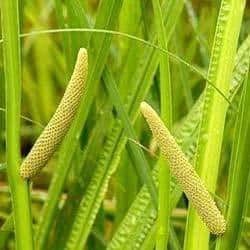
Photo Credit Jim McDonald

In the Inipi Ceremony, or “sweat lodge”, Bitterroot is chewed when the voice becomes hoarse from singing, and also in reverence to the plant’s immense spiritual virtues. Michigan herbalist Joyce Wardwell elaborated nicely on this once:
“At a Pow-Wow, a singer may sing for hours. Voice gets tired, and a little root is chewed. Calamus helps numb the vocal chords to allow the singer to continue. Have to be careful – have met a couple people who strained their vocal chords enough to cause permanent damage. Calamus also helps center and focus the energy to sing well, without clouding the mind or spirit. A little piece is chewed (usually no more than one inch root total for the whole week-end) and held in the mouth between cheek and gum for a long time even after the flavor is more or less gone. Sometimes, people don’t even chew the root, they just hold a piece in their mouth a few minutes. Then it will help increase saliva, increase range (yes it actually does – especially for high notes) and center one’s energy.”
Laryngitis, caused or aggravated by speaking, yelling or singing is a specific indication for its use. I chew it for weekend teaching trips, where I’m talking loudly to groups of people all day (just so they can hear; I’m not yelling at them all…).
There are numerous references to the use of Calamus as a stimulant, helping to boost the stamina of weary travelers. It has been noted that Sweet Flag is used similarly to the way Coca leaves were used by South American Indians. It increases energy and allays hunger (even though as a bitter it is used to stimulate hunger). I’ve chewed it while backpacking when it’s dusk and I’ve been walking all day and my pack is heavy and I’m a mile away from where I need to be to set up camp, and found that it gave me extra vigor with which to continue my trek. Again, I chew it for weekend teaching trips as well, when I spend a good portion of a day traveling, teach all day and socialize all night… it keeps me going, clear and focused so I don’t have to teach through jet lag. In North America, Sweet Flag appears to have been wild cultivated along trade roads by Native Americans, presumably to be used for this purpose. This is also analagous to the use of Coca leaves, which were essential to messengers traveling the Inca roads along the Andes Mountains. It was common throughout North America for Native American elders to chew the root to restore and maintain vitality and vigor. As the oft quoted citation goes, the size of the root chewed was often approximated by the sized of the persons finger, but dosage varied considerably from tribe to tribe. Certainly, though, the more root is chewed the more the stimulation is manifested physically.
The plant helps to stimulate attention, as well. K.P. Khalsa tells of how students at the Naturopathic school he teaches at will use some calamus when they’re up late studying, burning out, and have been reading the same page over and over, but not taking anything in. I’ve heard 7Song say that he’ll pass around some calamus tincture when attention starts to wander away after a lot of teaching.
Though it may seem odd, Calamus also excels as a relaxant, despite its stimulating properties. “Stimulant” and “relaxant” shouldn’t be seen a contradictory uses occupying opposite ends of a polarity: stimulating herbs increase the expression of the vital force, while relaxants relax resistance to that expression. they work together in a complimentary fashion to achieve the same end: better flow of energy and vitality. Calamus isn’t a sedative (it won’t put you to sleep), but can be incredibly effective in treating anxiety. Incredibly effective. It is this virtue of the plant that has really stood out to me, and set it wholly apart from any other remedy I might consider to ease anxiety. While seldom cited in any herbal literature, there is evidence of this virtue if one looks for it. Waller writes in his British Herbal that “It is of great service in all nervous complaints, vertigoes, headaches and hypochondriacal affections.” Culpepper notes that it “strengthens the stomach and head”. There are less references from Native cultures, but probably because: a.) they didn’t write stuff down, and b.) they might have preferred to keep this information to themselves. While ethnobotanists and friendly settlers were told much about many medicinal plants, there were some plants and some things about some plants that was kept close as sacred knowledge. Personally, I learned about this virtue through years of study with the plant, and later stumbled upon this or that comment that verified what I’d learned. I don’t know of the mechanism of action for calamus’s ability to diffuse acute anxiety states. Its aromatic oils likely clear perception, and perhaps its bitterness plays a role as well. I had a conversation with Matthew Wood once, all about bitters and shuddering (the sensation we get when tasting certain very bitter herbs). Matt says bitters can “unloose the sympathetic” – that part of our nervous system that is in charge when we’re in alert/fight/flight/freak/freeze states. Bitters are grounding; they impress the senses decidedly, and that can help bring people back into themselves. Physiologically, bitters stimulate digestion (which is suppressed in sympathetic states and encourage the production of mood stabilizing secretions in the digestive tract via the enteric nervous system.
Hmm… some words to describe the effect of Sweet Flag: Calming. Centering. Perspective. Joyce Wardwell once used the word “Resolution”… that’s a good one. It’s tempting to say that it instills “focus”, but focus isn’t quite the right word. “Focus” implies fixing the perception on a certain aspect of something, and Sweet Flag tends to open one’s awareness so that they’re able to take in what’s going on around them (or within them) with great clarity, without singling out any one aspect. So perhaps saying it instills clarity of perception is more accurate. I like to use borrow the concept of “depth of field” from photography… a narrow depth of field implies a narrower range of focus; broad depth of field a broader, more inclusive focus… this isn’t meant to imply a purely or predominantly visual effect; I think of calamus as increasing one’s perceptual depth of field.
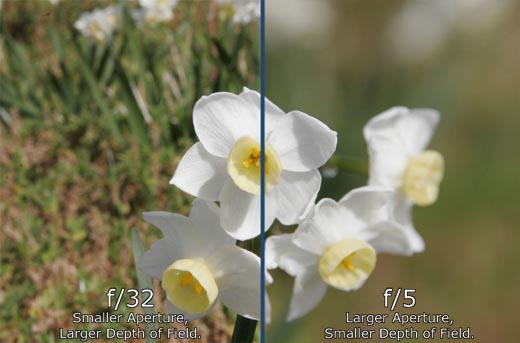
Photo Credit Jim McDonald
Sweet flag also seems to put your energy into balance, and get you energetically resonating as a whole. I like to say it “unscatters” energy. For this reason it excels as a treatment for panic and anxiety attacks, not only for full-fledged episodes, but for the “little daily anxiety attacks” that most of us can relate to. It is especially good when an intense/traumatic situation occurs, and you handle it excellently, but after its over you’re all strung out and a nervous basketcase. I find it works best when a bit is chewed as soon as the onset of an attack is perceived… often I’ve heard that once the attack starts, it’s not that it doesn’t work as well, but that it’s hard to remember to use it. Again, I think of that shuddering bitter quality; I visualize the shudder as the “freaking out” person getting a good shake: “Get a hold of yourself! Come back here, into your body!”.
(Incidentally, I feel this affect on anxiety is the reason why it was used for quitting smoking: not just because it causes a “distaste for Tobacco” (it has been smoked with Tobacco for treating headaches; although I personally don’t think the two blend together that well… like chocolate and tomatoes, if you had one, would you really want the other?). The intense anxiety associated with “Nicotine fixes” is very much like the anxiety picture that Sweet Flag is good for. However, it should not be assumed to be a magic bullet for the Tobacco habit, but rather an effective tool to supplement and enhance determination and will power. Quitting smoking requires… well, a long write up of its own.)
I’ve used the plant quite a bit with people suffering from trauma, including post traumatic stress disorder, chewed to push away the flashbacks, quell the panic, and return to the present moment. Feelings of dizziness, nervous queasy stomach, “leaving the body”, panic, looks like a scared animal in the headlights, doesn’t know which way to go, frozen by fear, wants to run, but which way?, disassociated… all these are good indications. Have the person chew on Calamus and breathe deeply, fully and slowly and often the anxiety and panic will fade. It’s an another option to consider alongside excellent remedies such as anemone, or indian pipe.
In Ayurvedic medicine, calamus is called vacha, which means “to speak”… not only a restorer of the voice in a strictly auditory manner, it is said to connect the heart to the voice, to allow people to speak clearly, to speak truth. One client with PTSD would chew on it before or bring it with her to therapy sessions, as she felt it helped her let out things she felt she was holding in, fearing to speak aloud, to have “out there”. Herbalist and Naturopath Anne Hill offers some eloquent insights: “Intuitively and thru some playing around with calamus I have come to regard it as an herb for when people are in stuck mental states, like spiritual emergence type of situations where a layer of fear becomes prominent and inflamed almost and is ready to unfurl itself and fall away so that the person can move to another working level. I think calamus helps by thinning the veil between ego and spirit as well as spirit and Universe (or ____________ please insert deity name of choice here). When one has a glimpse or feeling of universal love, that fear can be more easily released… My understanding of being in fear is that it is so all inclusive that it barricades itself in so that no new or different perspectives or information can be obtained to help one move outside of that fear.”
K.P. Khalsa tells a very moving story in a presentation he offered on herbal remedies for autism (that link goes to a recorded presentation; calamus is discussed at 45:45) that illustrates the immense potential of vacha: “I was talking to someone the other day whose child [is] 16… he’s been essentially nonverbal his entire life. He’s said a couple of things here and there, but really he doesn’t communicate verbally. She was telling me that recently they were sitting in their living room watching TV and mom and dad were sitting on the sofa behind the child… he was sitting a few feet from the TV on the floor watching his favorite TV show… and he’d never said a word to them in their entire life. He had started taking calamus from their therapist about 2 weeks previously, and in the middle of his favorite TV show, he turned around, looked at both of them on the couch, and said “Mom and dad, I love you.”
That story always makes me teary eyed.
Of course, we should assume that there was a much larger and comprehensive protocol in place, but still… a priceless moment.
Another dramatic story comes from Brigitte Mars; she told me of a friend whose boyfriend was in a coma after a motorcycle accident. Her friend applied a small amount of calamus essential oil on his mustache, and he came out of the coma that day. There is also evidence suggesting that calamus can hasten recovery after stroke. Such restorative actions on neurological function correlate with the Ayurvedic understanding of the plant. Frawley and Lad write, “It is a rejuvenative to the brain and nervous system, which it purifies and revitalizes… I promotes cerebral circulation, increases sensitivity, sharpen memory and enhances awareness.” Hmm… seems exactly the way the indigenous peoples of North America use it.
Now, we’d think that this plant would be in wider usage than it is, eh?

Sigh…
Currently, the FDA considers Calamus root to be carcinogenic. This assertion is the result of lab studies that involved exposing lab animals massive doses of isolated chemicals (beta-asarone) over a prolonged period of time. The animals developed tumors, and the plant was labeled carcinogenic. Again, these tests were Lab tests of isolated chemicals in massive doses over an extended period of time. If water were to be tested in the same way, it would be deemed dangerous because people drinking too much of it would drown. If oranges were tested this way, they’d be considered a caustic poison because of the ascorbic acid (Vitamin C) they contain. As a reaction to this assertion, many herbals make reference to using only “American calamus”, which doesn’t contain the “carcinogenic” beta-Asarone in its essential oil (it was, after all, the Indian Jamu strain they used to extract the beta Asarone…).
Errrrrr… for your sake (and so I don’t lose my generally pleasant authorial tone), I’ll refrain from going off into a tirade about extracting chemicals from plants and making assumptions about the plant based on the effects of the extracted chemicals. Instead, I’ll simply draw a picture that illustrates their reasoning (start at 12 o’clock and proceed sunwise):
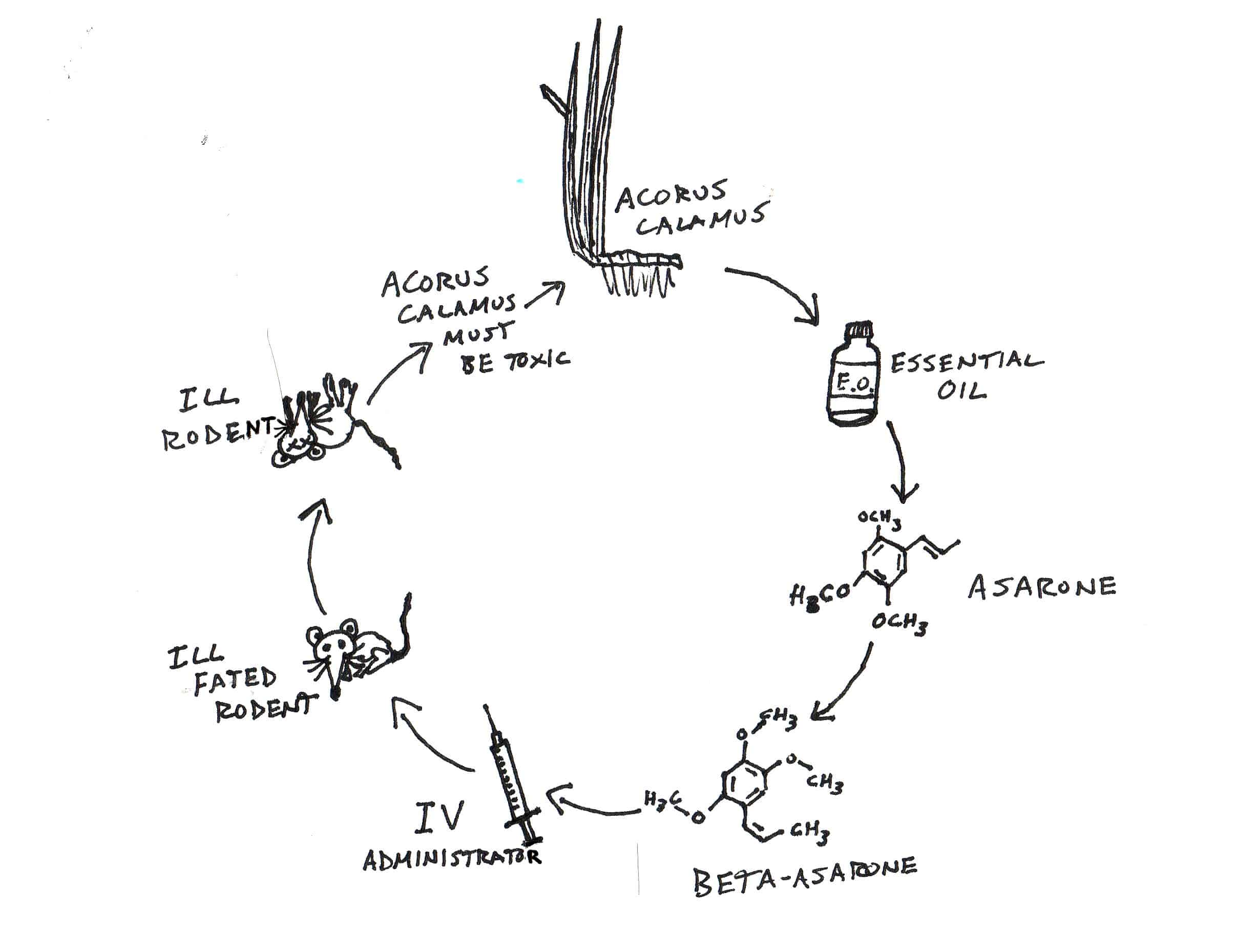
Image Credit Jim McDonald
Foolishness.
I don’t believe the plant is carcinogenic. There’s no evidence of this, not a single shred that connects the whole plant with carcinogenesis or tumors, and I don’t worry about this AT ALL. In all indigenous cultures and most traditional herbal systems, calamus is credited as a plant that preserves life and increases vitality. It has been used daily by many cultures to ensure long life. But of course, the good thing about holistic medicine is that we all take responsibility for our own well being, and so its up to you to make your own decisions about whether or not you’ll worry about this. As for me, I’ve already given the issue more time than it deserves. Let’s get back to what counts…

An accurate account of Sweet Flag cannot be given without addressing its role as a Sacred plant. This is a rather daunting task, methinks, but I’ll do my best to convey what I’ve come to know about it without getting too flakey. What’s especially interesting is that most of the impressions that follow I learned from chewing on the root for close to 20 years now… after I’d developed a number of ideas about what it did, I began to, here and there, run into other people who used it, and the impressions they had about it were usually quite similar to mine… on more than a few occasions I’ve heard the same words, the same phrases… people who really know calamus never seem to talk about it as a digestive bitter or carminative, they talk about what it does energetically. That’s where its most potent virtues reside.
It should be understood that all plants – indeed all things that are upon this Earth – possess virtues, possess medicines that define their character and the role they play in the unfolding of Creation. While all things are in some way teachers to us, there are some in whose medicine more deeply lies this task of Teaching. Some plants are Teacher Plants; they’re catalysts that help a person learn about far more than just themselves. Tobacco is a Teacher Plant, as are the Teonanacatl. Many of the Artemisias are Teachers. And Calamus, too, is a Teacher Plant.
Calamus is best understood as a plant whose spirit teaches those who make relationship with it how to live in a good way upon the Earth; to live gently, lucidly, perceptively. It is subtle, and teaches a subtlety of perception, a subtlety of awareness… those who do not perceive such subtleties will likely find little in it of merit (though they could most benefit from such teachings). But make no mistakes: the plant is incredibly wise & quite sentient. If perhaps you cannot feel what it is putting out, it can certainly feel what you are.
It is impossible to really describe what my relationship with this plant is like. How would you describe an orange to someone who had never tasted one? The best that can be done, I suppose, is to offer such descriptions as strike near the mark.
There’s something about Calamus I’ve always likened to the song of crickets. If I were to describe it using the idea of resonance, of sound, I would think of the long, slow undulating rhythm of crickets, and the way you come to feel if you sit out in the evening and just let that music wash over you… the way your tension dissipates, the way your mind slowly lets go of its many errant simultaneous thoughts, one by one, till you’re just there, right where you’re at, and perfectly contented to be there. Tibetan “singing” bowls create a similar effect in me, if they continue for a long enough time… but they don’t quite compare to crickets, or the rustling of leaves in the wind, or the running of water over stones.
Someone once asked on Henriette Kress’s herblist: “When you take it, what thoughts run through your mind?” and my friend Art Sackett replied, “Personally, what’s remarkable is the thoughts that don’t run through my mind.”
Exactly.
When preoccupations drop away, a clarity of perception is revealed. It becomes easy for the mind and senses to perceive; yet do so without narrowing our perception. Chewing on Calamus seems to sharpen vision noticeably, but ironically, this effect is more pronounced when you’re just taking things in, and less so when you try to focus on something specific. When you do try and focus, the clarity diminishes somewhat; to return when again you return from “looking” to “seeing”. This effect seems to extend, as well, into its more energetic effects. It’s also interesting and insightful to look at how the plants more concretely medicinal effects mirror its more energetic ones. As a gastrointestinal tonic Calamus stimulates digestion while also having a relaxant effect; or said differently it stimulates assimilation and resolves resistance. This paradigm extends beyond the digestive tract and into more esoteric facets of our beings.
Clearly, given such suggestive descriptions, it would be easy to assume that Sweet Flag is a hallucinogen, which indeed has been done. This opinion has been widely popularized by Hoffer and Osmund’s The Hallucinogens, which briefly covered its use and said that it produced an experience “very similar to LSD”. More suggestions were made because asarones present in Calamus Root can be used in the synthesis of TMA-2, a synthetic hallucinogenic phenothylamine that is similar in structure to Mescaline. It has been erroneously reported that the body converts the asarones in Calamus into TMA-2 as they are metabolized, and that Calamus contains hallucinogenic compounds similar to (and more powerful than) Mescaline, and that it produces “strong visual hallucinations”. Web searches on Calamus will turn up as much information on its purported hallucinogenic activity as they will on its medicinal actions… more, perhaps. Most often, they depict accounts of (presumably) adolescents consuming very large quantities of the root along with beer, Mountain Dew, corn chips and doobies because they are “pyschonauts” looking for a “plant ally” to teach them all about life; emesis is often the result. This misguided course of action (which, incidentally, definitely does not impress plant spirits) is rather ironic in that Calamus can indeed serve as a “Plant Ally”, and you can indeed learn a lot of interesting things from chewing on it.
But I don’t consider Calamus to be psychedelic. It certainly, though, is psychoactive, and can produce subtly profound insights. But everything is psychoactive, no? Everything we ingest affects not only our body, but our mental, emotional and spiritual faculties as well. Take Basil, for example. Eat a bunch of fresh Basil on an empty stomach, and you’ll be walking around with a Basil buzz, to be sure. Does that make it psychedelic?
Such words are best left behind, as they tend to predispose one to looking for a certain kind of effect, and in doing so one may miss the effect they’re actually experiencing. As my friend Art Sackett once said (well, wrote): “It is what it is, and naming it too concretely might just diminish the effect — those who come after might be so focused on trying to experience “the right effect” that they miss the experience they’re having.” In other words, have no expectations. If you want to make relationship with a plant, you can’t go projecting your ideas about it onto it. And don’t go expecting anything profound, Calamus just clears out the clutter and gives you a good mindset from which to ponder what’s causing your clutter. But you have to be a part in this… if your thoughts are racing around like crazy, you’ll not be able to “hear” what the plant is saying… it’d be like trying to listen to crickets at a rock concert. So, you have to settle down your racing thoughts in order for the Calamus to help you settle down your racing thoughts… Sounds contradictory, but its like… walking up an escalator… you go faster than if you were taking the stairs, and faster than if you just stood on the escalator.
I know lots of people who have just been looking too hard for some dramatic effect to see what it does do. And they try it a few times, and when they don’t get bowled over (except perhaps by the flavor), they lose interest. There’s a lesson there, even though they don’t see it. Remember: subtlety of perception, subtlety of awareness, subtlety of self awareness…
And be aware, as well, that Calamus (and any plant, really) offers the most benefit when you work with it over a prolonged period. You get to know it; you develop a relationship with it, just like you do with people. And just like with people, a good relationship gets deeper and richer with time. To make relationship with a plant is an ongoing process of patience, humility and respect. If you approach Sweet Flag with this attitude, and without expectations of what fruit will be born of this endeavor, you will likely benefit in ways you cannot imagine.
© Jim McDonald
http://www.herbcraft.org/
Offsite links of interest…
The Ethnobotany of Sweet Flag (timothy j motley)
King’s American Dispensatory (felter & lloyd)
Eclectic Materia Medica, Pharmacology and Therapeutics (harvey wickes felter)
The Physio-Medical Dispensatory (william cook)
Calamus Video (7song)
Calamus/Sweet Flag (maria treben)
A Modern Herbal (m.grieve)
British Pharmaceutical Codex
Sweet flag candy? This I’ll have to try (henriette kress)
Sweet flag syrup: The efficient use of leftovers (henriette kress)
History of Vegetable Drugs (john uri lloyd)
Vacha (todd caldecott)
Calamus entry from Wild Roots (doug elliott)
Herbal Remedies for Autism (k.p. khalsa – calamus info at 45:45)
Calamus taste, let these not be leaves of sorrow… part 1 part 2 part 3 (al-qemi)
Evidence Based Info on Acorus calamus (greenmedinfo)
Calamus poems (from walt whitman’s leaves of grass)
_________________________________________________________________________________
We offer fresh and dried American Calamus. Visit our Wildcrafted Herbs page or call 541-846-7995 for more info.
